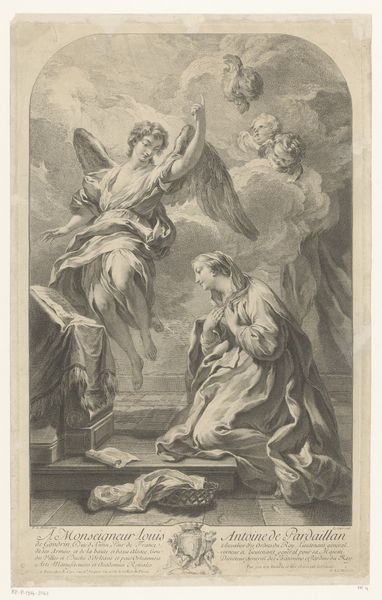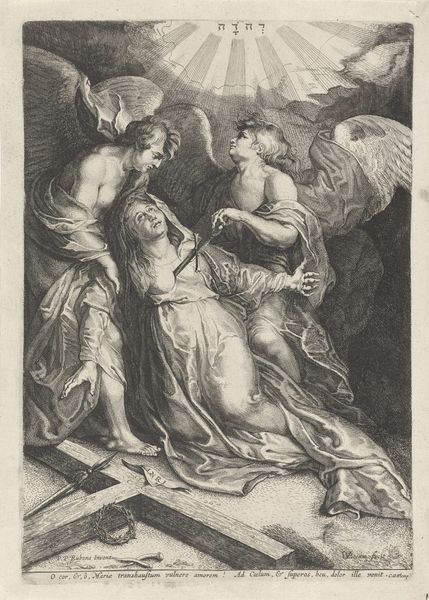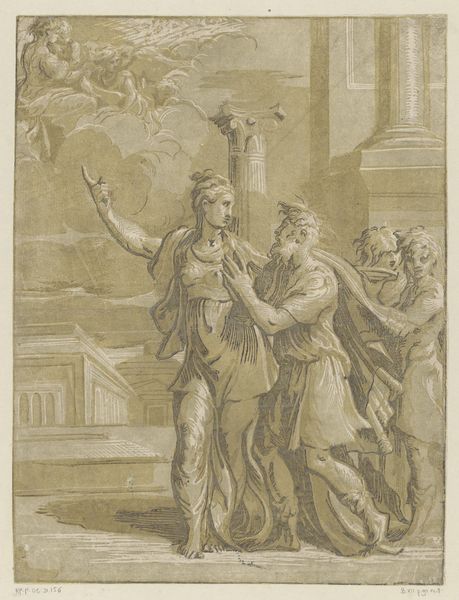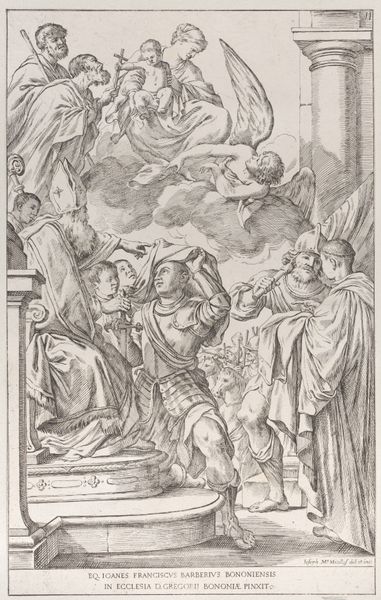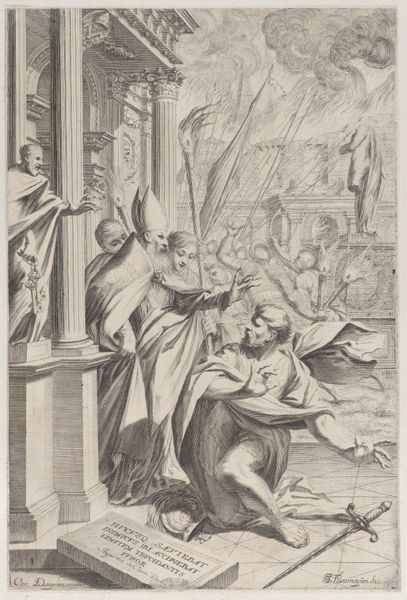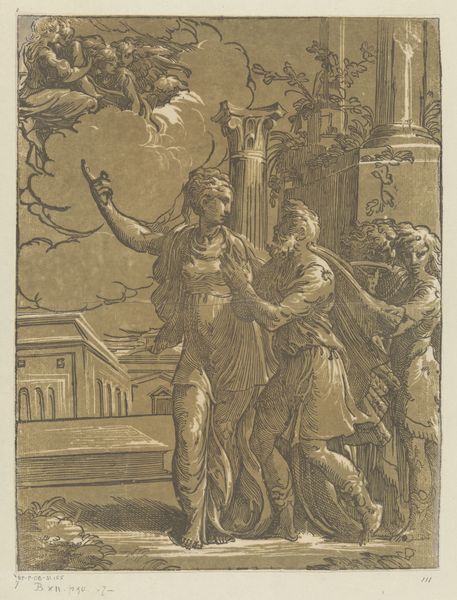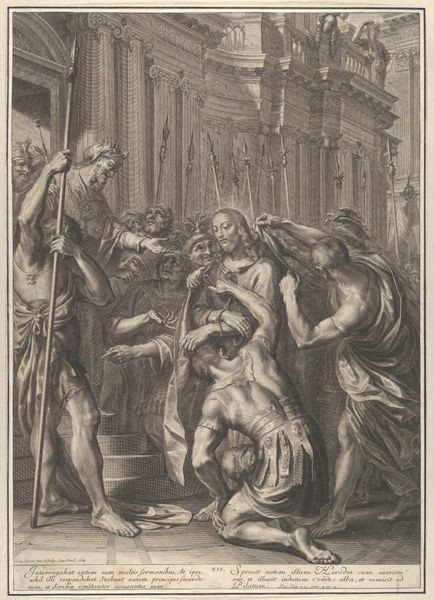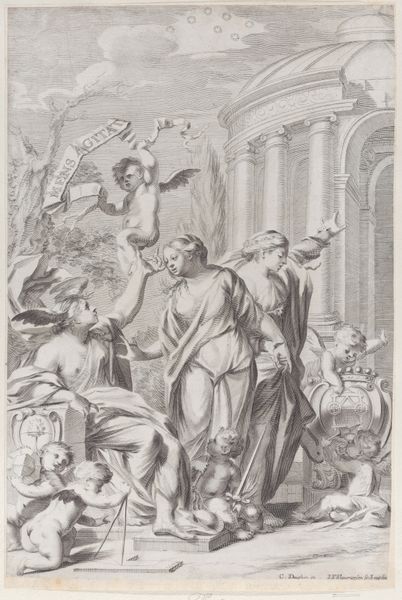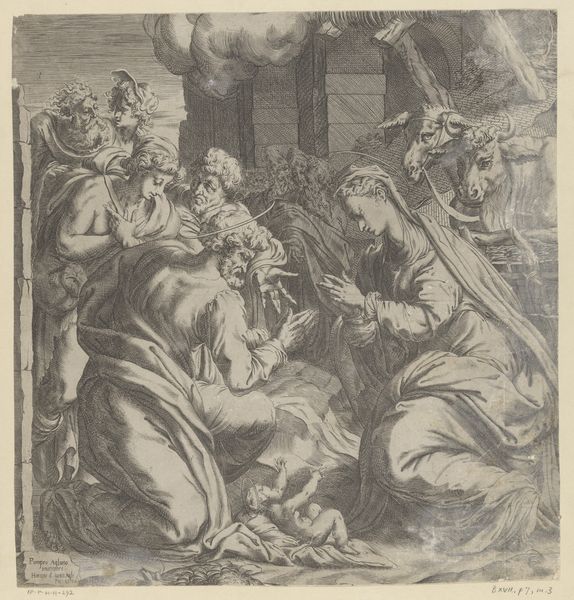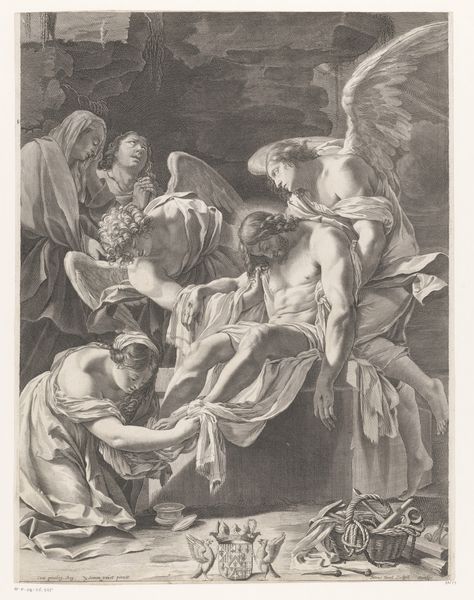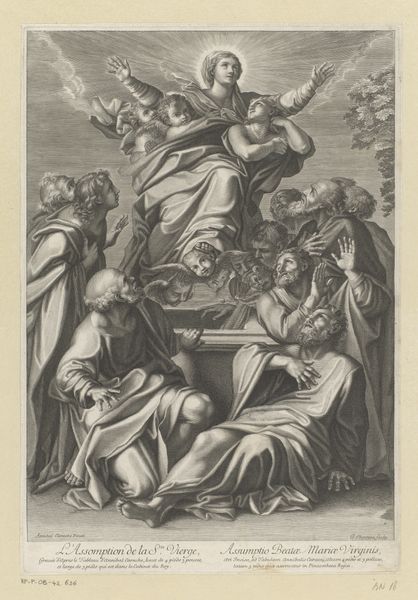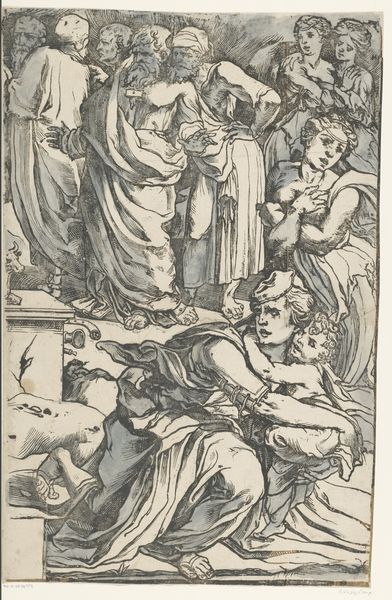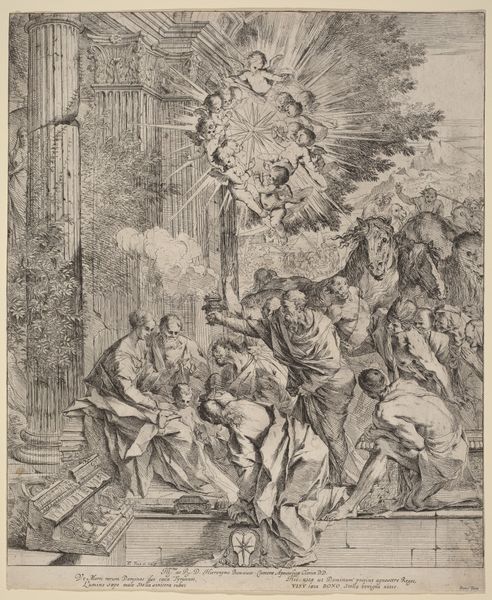
Dimensions: height 364 mm, width 241 mm
Copyright: Rijks Museum: Open Domain
Editor: So, here we have Philippe Thomassin’s “Saint Catherine of Siena,” an engraving from around 1588-1589, housed in the Rijksmuseum. The overall feeling I get is one of devotional intensity – almost a theatrical, dramatic reverence. What do you make of it? Curator: I see this engraving as a fascinating intersection of religious devotion and the political climate of the late 16th century. Consider the Counter-Reformation, and the role images played in reaffirming Catholic dogma. How might this image, with its portrayal of Catherine receiving the stigmata, function within that context? Do you see any cues of social positioning, in the image or inscription? Editor: I didn't think about that aspect of Counter-Reformation politics initially, I just focused on Catherine. I notice that the inscription under the image, while in Latin, seems to underscore the intensity of divine love and the willing acceptance of suffering, which speaks directly to the virtues upheld during that period. Curator: Precisely! But let’s push further. Catherine of Siena wasn’t just a religious figure; she was also a politically active woman who advised popes and rulers. How does this representation, which focuses primarily on her mystical experience, perhaps downplay or even erase her political agency? What are your thoughts on this deliberate narrative choice? Editor: That’s a really interesting point! It makes you wonder about the conscious choices in constructing her image. The almost passive state of Catherine, supported by angels, contrasts with her historical role as an active influencer. Maybe it was a way to make her more relatable, more like an "everywoman"? Curator: Or perhaps more palatable to a patriarchal power structure. By emphasizing her piety and submission, the engraving could reinforce traditional gender roles, even while celebrating a powerful female figure. It’s a complex tension, isn't it? Editor: Absolutely, I had never considered all the implications related to the gender and social background. Curator: These layers of interpretation make historical art so compelling.
Comments
No comments
Be the first to comment and join the conversation on the ultimate creative platform.
